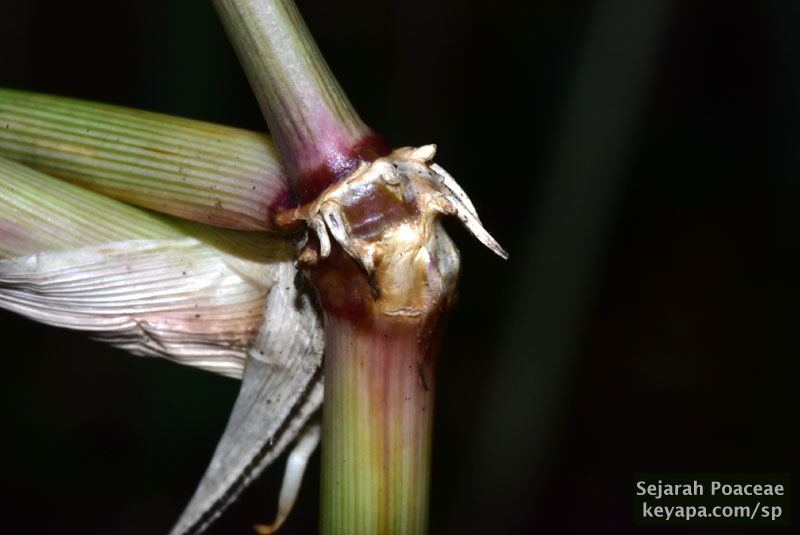
Awhile back I wondered about the fact that there were so few epiphytic grasses. The attainment of this lifestyle seemed to be a daunting task for a plant family that is in other ways so adaptable.
Two weeks back I was walking along a street when a discovery I made highlighted another lifestyle that seemed to be just beyond the grasp of the Poaceae. I saw a grass (that I later tagged as Panicum hemitomon, a native member of the Panicoideae that is commonly called maidencane) that was climbing up and around a small tree (or tall shrub). The shrub I later tagged as Baccharis halimifolia, which grows up to 3 meter tall, and this caused me to start thinking about vines and the adaptations some have to enable them to climb.

The first thing to note is that there are at least two main types of vines, based on their method of climbing. True clinging vines have many adaptations that allow them to truly master the art of climbing. Some have tendrils (which are modified leaves, stems or petioles) to help them up, while others actually have twining stems that can twirl around objects for support. Aerial rootlets can also be used to attach to structures, and some species even have adhesive pads or hooks that enable them to climb.

The second type of vines do not actively attach to the support, but rather sprawl and scramble on the tops of other plants. This was what the P. hemitomon that I saw seemed to be doing. I searched it but could not find any active attachment points to the shrub. Instead, the grass seemed to be draping itself on top of branches and leaves, using the shrub as a support so it could better reach the light. It reached the lower branches of the shrub by standing freely on its own.

P. hemitomon does have rootlets that sprout from the nodes, but none of the ones I examined attached themselves to the nearby branches or leaves. The stems as well never twirled around any support, but seemed to passively be borne by the supporting shrub structures.
Nevertheless, the grass attained impressive heights this way, with some culms reaching up to 3 meters above the ground, breaching the small shrub canopy. In order to do so, the internodes were stretched out, with many attaining lengths of 10 cm or more! Given enough time and latitude, it might be possible for this specimen to almost cover up the shrub, a wannabee kudzu grass in the making. In fact, the center of the shrub was covered by masses of P. hemitomon culms, and a much shorter shrub nearby was almost completely covered by the grass.

I should note that P. hemitomon is not the only Poaceae species that can scramble up trees in its quest to reach the light. Some bamboos are also scramblers. But the evolution of true vining structures seems to have escaped the family, and whether or not the members have the inherent genetic architecture to actually develop them is a question that has not been explored. Perhaps if I had a time machine I could go forward a hundred thousand years into the future, and upon landing discover bermuda grass (Cynodon dactylon) covering the canopy landscape, their tenacious stolons having evolved into top-notch climbing tools.

Leave a Reply